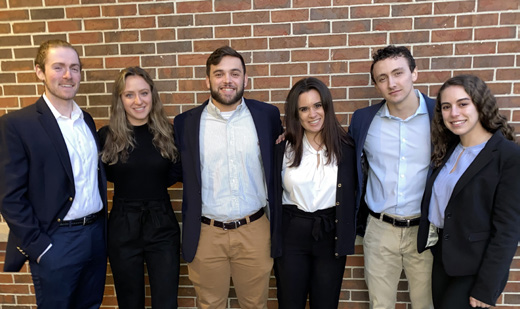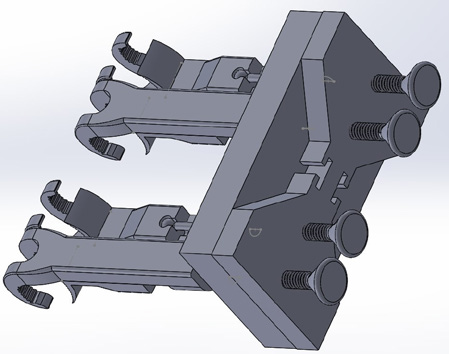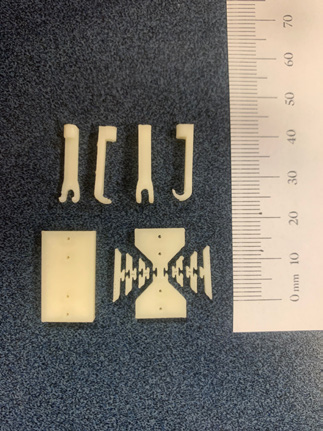
Figure 1

Figure 2

Biomedical Engineering
Team 9
Team Members |
Faculty Advisor |
Emily Borges |
Sangamesh Kumbar Sponsor UConn Health |
sponsored by

Using a critical sized long bone defect in rat models is a very common method of testing the efficacy of bone tissue engineering scaffolds. However, these scaffolds often lack the necessary mechanical properties to support bone regeneration. Therefore, a fixation device must be used to maintain the defect and provide support while the bone heals. Developing an external fixation device for rat femur models will allow for an accurate translation of additional bone healing factors (i.e. scaffolds and composites) onto larger scale models for use in future testing. Due to the average size of rat femurs and the traditional screw fixation method of external devices, bone fracture rates during implantation are a major problem in clinical and research settings. Developing a device to reduce the fracture rate will increase the effectiveness and efficiency of fixation devices and will allow for the study of other factors such as stiffness and load intensity. Using clamps, as opposed to the traditional screw fixation method, can mitigate bone fractures caused by screws. This project will explore the potential of a clamp fixation method in regards to bone fracture reduction while maintaining femur stability.
